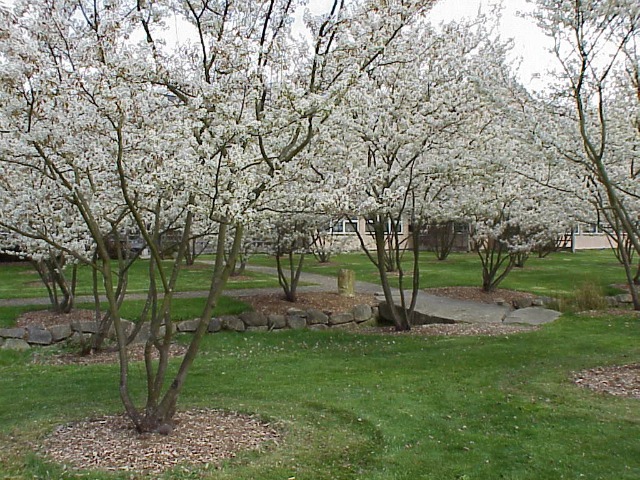
[PHOTO]
With its springtime blooms and summer fruit, serviceberries have much to offer Canadian birds and beneficial insects. And it just so happens that they look good, too.
Serviceberries, known to plant buffs as the latin Amelanchier, are found across most of Canada, growing in a variety of conditions. The exact number of species is hard to say, as botanists can’t always agree on classifying the species. Approximately 10 to 15 species are considered native to Canada.
Their usefulness and versatility have earned them a warm spot in many a gardener’s heart. Some are bushy while others grow to be small or medium sized trees. They can stand alone or provide a backdrop in a garden bed and many tolerate poor dry soils. Your garden and location will indicate which one is best for you.
In the spring, Amelanchier blossoms entice beneficial insects, such as bees and butterflies, which provide that ever necessary service of pollination. As they are early bloomers, they are a very important source of food for these emerging insects.
By the summer, the fruit is ripe and both birds and animals come to enjoy their delicious and nutritious bounty. According to Doug Bennet and Tim Tiner, authors of Up North Again, serviceberries have a sugar content of 20 per cent and are sweeter than blueberries and raspberries. They also contain minerals such as iron and copper.
Many species of birds feast on the berries, including orioles, thrushes, woodpeckers and waxwings. Some are also known to nest in its branches, such as robins and cardinals. In addition to birds, mammals like squirrels and chipmunks will eat the fruit while larger animals such as moose, deer and snowshoe hares may browse on leaves and twigs.
Serviceberries are also important plants for the larvae of certain butterflies such as tiger butterflies, viceroy, admirals and others.
For more information about this amazing flower, click here.



